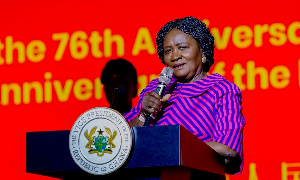Railway transport has been an integral part of urbanization in any developed economy. It has become so integral to urbanization that almost all developing economies are also making every effort possible to adopt railway transport in their cities.
It is, therefore, not surprising that one of Ghana’s agenda is to develop its railway transport system. It has been demonstrated that railway transport leads to socio-economic development so it is anticipated that the Ghanaian railway transport development project leads to socio-economic development.
ACEYE has a greater interest in contributing to the knowledge necessary for the better development of the Ghanaian railway system. The development of the Ghanaian railway system in this era is characterized by some complex interwoven phenomena and factors that have to tackled individually.
Ghana has had a vibrant railway system before thus the development of the railway system is not an entirely new project. Most railway transports in emerging economies were initiated by the British but maintained and developed by the local country. Ghana’s railway system had been initiated by the British but could not be sustained and expanded by the country, hence its collapse.
Building the railway at this time comes with some extra challenges which make it necessary for adequate information to be explored to enhance the development of the railway system. First of all, the current development of the Railway System is a project of Ghana as a local country.
It implies that unlike the first instance in the 1900s in which the British built the railway system, it is now solely the responsibility of Ghana to build a railway system. Secondly, the railway system has been progressed to a highly advanced technological level by the developed economies that it has raised “the bar” so high for Ghana. To meet the standard of a Railway in this era, Ghana must adopt some sophisticated technologies in railway development.
Thirdly, the railway development is not just a new project but a recovery plan, in that, as much as the railway is a new project in the country, it is also a means of recovering the then-existing Railway which had some cultural heritage of Ghana rooted in it. Moreover, the development of the Ghanaian Railway System has to face fierce competition from the road transport system which has been a dominant mode of transport the citizenry is accustomed to.
ACEYE has studied the train system of various countries and discovered that there are some essential socio-economic factors that are deemed as the critical success factors for the sustenance and development of the railway system.
Critical Success Factors (CSF) refers to the factors, items or components that must be successful for the entire system to be successful. The first CSF is the business model.
Every railway transport system operates on a different business model. Even though from afar, it may appear that railway transport is just about railways and the trains. The rail infrastructure and the trains, though basic requirements, are the least contributing factors to the success of a railway system.
The rail transport companies must develop a business model by defining the value chain, define their target market, specify their operational activities, establish their network skeleton, and more importantly, define
its competitive strategy.
The second Critical Success Factors to be considered is the Institutional Arrangement. Institutional arrangement is the foundational structures such as operations, services, regulations, norms and social institutions that must advance the progress of the projects. Some institutional arrangement
such as policies, regulations on transport, financial payment system and some many other factors must be established and developed even before further investment into the rail infrastructure are made.
The third CSF is funding structure. Some railway transports are funded solely by the federal governments whiles others are funded by private individuals and corporations.
Ghana has automatically relegated the funding of the railway transport to the responsibility of government but studies have shown that most of the long-surviving railway transports are privately funded, mostly by crowdfunding at the inception.
Therefore, ACEYE calls the attention of Ghanaians to consider showing investment interest in the Railway project.
ACEYE advocates that if Ghana wants to be a part of countries leading the global economy, there is a need for government and key stakeholders to pay attention thoroughly to studies of the railway transport system in several countries across the world and equally note the implications ahead for
Ghana.
This is not far-fetched from what ACEYE intends to do.
Opinions of Tuesday, 5 November 2019
Columnist: ACEYE















